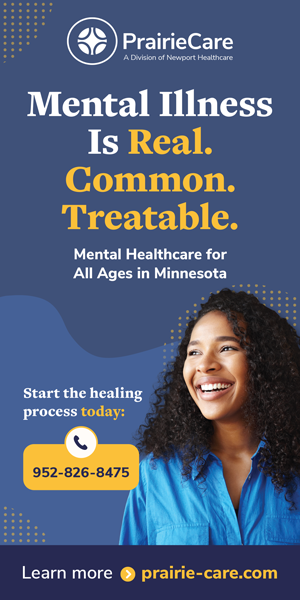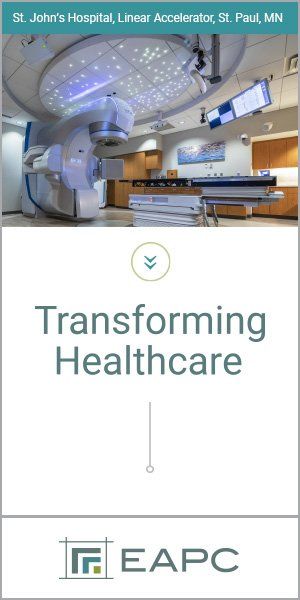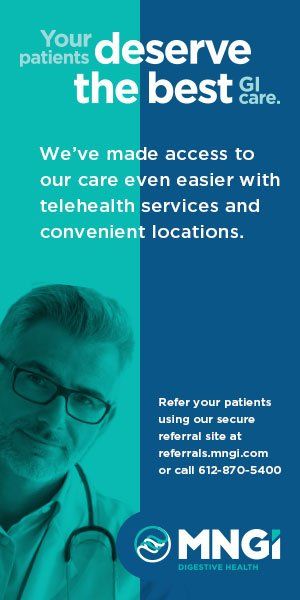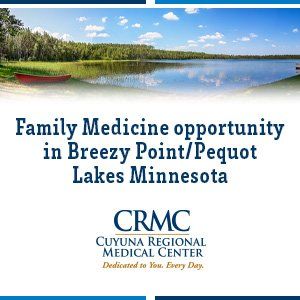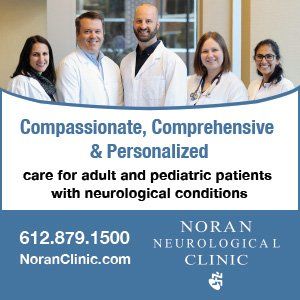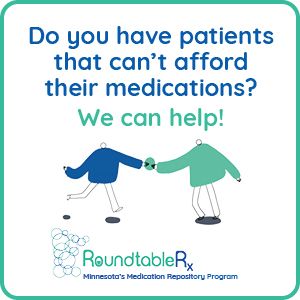Minnesota health care roundtable

The New Dark Ages
A National Health Care Crisis
The following report from the 60th session of the Minnesota Health Care Roundtable addresses the impact of recent federal administrative actions around health care funding and how they affect different health care stakeholder groups. Every element of health care delivery is facing new challenges. Our panel addresses these issues and discusses ways to seek positive change. We extend our special thanks to the participants for their commitments of time and expertise in bringing you this report. It bears note that there were individuals with important perspectives to share, and wanted to share them, but feared speaking due to potential retribution against the populations they serve. This winter we will publish the 61st session of the Minnesota Health Care Roundtable and it will explore evolving new partnerships forming to meet the unprecedented redefinition of science being created by partisan politics. We welcome comments, participation and suggestions for topics.
Please share some of the ways your work is affected by the recent actions of the current administration.
Aylward: Many of my patients who are immigrants are scared sick. Often, they are missing appointments out of concern for coming into clinic and being apprehended by ICE. This has not happened yet at our clinic, but the fear is real. They are also coming in to clinic with abdominal pain, palpitations, insomnia, poor appetite and other symptoms that need evaluation but are often attributable to anxiety and depression. At a very basic level, people who have fled countries due to persecution are feeling persecuted.
The attacks on DEI and research have resulted in grant denials and cancellations and put a pall on any discussions around diversity. For my research colleagues, they are literally navigating the governmental word police to maintain funding for grants. Many physicians who work in global health have found their time eliminated and many of their collaborators in other institutions and countries have lost their jobs. In total, the cuts in grant funding and for global health infrastructure and attacks on DEI are leading to the undoing of decades of progress on these fronts.
Watson: Health centers receive grants from the federal government to ensure primary care medical, dental and behavioral health services. On average, these grants represent 17% of an average health center’s revenue stream. These grants have been delayed twice, creating cash flow issues for health centers that already operate with slim financial margins.
Additionally, health centers are feeling the impacts of “reductions in force” of the federal workforce — particularly the Health Services Resources Administration. As the new executive orders impact our operations, health centers have less access when seeking regulatory guidance in order to comply with directives.
Health centers were founded over six decades ago on the simple premise that local solutions should address local problems. This local control has been a hallmark of our efforts over this time to address the differences in access to services and health care outcomes our communities experience. Recent announcements have created confusion in our communities — from both health center patients and staff.
Abderholden: While NAMI Minnesota has not yet been directly affected by executive orders or funding cuts, the actions of the Trump administration will negatively impact the mental health system. The new Administration for a Healthy America (AHA) will combine the following agencies: the Office of the Assistant Secretary for Health (OASH), Health Resources and Services Administration (HRSA), Substance Abuse and Mental Health Services Administration (SAMHSA), Agency for Toxic Substances and Disease Registry (ATSDR), and National Institute for Occupational Safety and Health (NIOSH). The staffing at HHS has been cut by over 10,000 people or close to 24%. We have heard that SAMSHA is facing cuts to funding and 50% of its staff. This is the only federal agency focused on addressing the needs of people with mental illnesses and substance use disorders. Minnesota receives roughly $800 million for substance use disorder and mental health treatment and services, so any cuts to these grants could have a substantial impact on our system here. We are worried about the impact on the 988 Suicide and Crisis Lifeline, Disaster Distress Lifeline, the treatment locator, information on mental illnesses and substance use disorders, substance use prevention and so much more. Funding for the Certified Community Behavioral Health Centers could be in danger.
Sencer: For many years, many of us have felt our health care delivery system was slowly imploding, but no one could have foreseen how quickly so many negative things would happen. To pediatricians, one of the most concerning events has been the promotion of an antivaccine mentality. Measles is a prime example. There is no reason for a measles outbreak or children dying from measles or spreading it if they are vaccinated. Fueling an antivaccine culture will result only in more needless deaths and higher costs and create problems that will be difficult to come back from. Seemingly no forethought or study is going into these sweeping new policies.
There are ongoing efforts to dismantle decades of progress.
—Sue Abderholden
What are some of the long-term effects this action will lead to for patients/clients?
Watson: Over the long-term, this instability and lack of clarity destabilizes the health center’s ability to undertake new initiatives and expand services to more Minnesotans beyond the 170,000 they serve annually. Given the increasing chances of an economic downturn, Minnesota needs a robust health center network to ensure there are places to access affordable primary care services.
In addition, health centers continue to experience challenges in recruiting and retaining a workforce throughout all levels of our organizations. This instability puts us at a further competitive disadvantage when it comes to ensuring we have a workforce that meets the demand for services in our communities.
Aylward: The proposed Medicaid cuts will have a devastating impact on patients and hospital systems. Many people on Medicaid will lose insurance and find themselves navigating systems that are designed for those who are insured. This will lead to delayed care, no care at all or insurmountable debt for many. Meanwhile, all clinics and hospitals will be affected because of increasing needs for “charity care” or non-reimbursable services. I think this will have a disproportionate impact on rural health as many clinics and hospitals rely on Medicaid and are already stretched thin.
Sencer: Denying the value and relevance of science is irresponsible beyond imagination. Denying the value of vaccines, with track records proven beyond question, or attributing side effects to them with either zero evidence or proven as false claims, is much the same. When people are sick, they want the best care possible, when they are not, many seem willing to believe whatever they are told, without regard to whether it its true. The long-term consequences of this create many problems around a wide range of issues. Foremost, cutting access to care will lead to much worse overall population health. Things like life expectancy and quality of life will suffer. An agenda that, in essence, promotes dumbing down the masses will drive intellectual assets that are crucial to progress and positive evolution out of the country. Denying access to health care to those most in need deepens divisions in society and flies in the face of morality.
Abderholden: You can’t build back an agency. Too many people were fired without examining their roles in the agency. We will have lost all that wisdom and knowledge and will never get it back. We have spent much time and energy publicizing the 988 crisis line and advocating for money at the state level to fund the call centers in our state. We don’t know what will happen if the dollars to fund the infrastructure of 988 on the national level get severely cut. The veterans’ lifeline already lost many staff and cannot answer calls in a timely manner. If people cannot get the help they need, they will stop calling. We want a mental health response to a mental health crisis, but if we decimate 988, people will revert back to calling 911. Our mobile crisis teams and 988 have proven to be effective — it would be harmful to destroy this service. Research at the National Institute of Mental Health (NIMH) is also being threatened by cutting the percentage for administrative costs, which will effectively stop research projects from moving forward.
The near closure of the Department of Education – already losing 46% of its staff — has left many wondering what will happen to special education and 504 plans. Important projects were funded, such as Project Aware, which supports developing a sustainable infrastructure for school-based mental health programs and services. Minnesota has received several of these grants to build on our efforts to have a school-linked program in every school building.
These “cost saving” measures ignore the cost increases they will cause. Please share some examples of how this will arise in your work.
Sencer: Let’s take measles as an example. The cost savings from not providing vaccines are minimal. The cost of care if a child is hospitalized for measles, and worse, dies, is enormous. To accurately calculate that cost we must also factor in lost time and or wages by the parents and what that may extrapolate to when considering lost employer productivity. If a child receives health care through a federal program that becomes unfunded, perhaps that child skips low-cost preventive care. If this leads to a situation where the child becomes so ill she needs to be accepted into the ED the costs become even higher.
Cost savings from defunding research are, at best, counter intuitive. Advances in medical research take time, many years in most cases; and huge investments have already been made in the next generation of diagnostic technology and subsequent cures. Huge advances in treatment for Alzheimer’s, ALS, Parkinson’s and others are near at hand. Imagine the cost savings if we could turn Alzheimer’s off versus the research to find that cure. In oncology, immunotherapy is emerging as a promising source of new therapy. Considering that one in every three Americans will get cancer at some point in their lives, more not less cancer research would seem to be in order.
Abderholden: One of our biggest concerns right now is the proposed cuts to Medicaid. Medicaid pays for a wide array of mental health care and services, and cuts to this program could decimate the mental health system. Medicaid expansion has especially been helpful for young people with mental illnesses to access the care they need to recover and yet that program is being targeted. Enacting work requirements is oblivious to the fact that it is very difficult for someone with a mental illness to be certified as disabled by the Social Security Administration, and so they will lose their Medicaid — and then what? Criminal justice involvement, homelessness, frequent hospitalizations, uncompensated care. Mental health needs don’t disappear because you lose your health insurance, we just pay for care in other systems in less effective and more costly ways. Increasing uncompensated care, particularly for hospitals in rural areas, could lead to their closure, affecting not just people on Medicaid, but everyone in that community.
Aylward: I reject the idea that these measures are in any way cost saving; and any invocations of cost savings are deeply disingenuous. When a politician mentions cost savings the riposte needs to be: “Compared to what?” Medicaid is a far more effective and administratively efficient program compared to any of the private insurers. More so, governmental programs are in a position (rightly so) of dealing with the problems the private sector won’t deal with. So, while private insurance companies extract billions of dollars from the health care system, Medicaid continues to deliver care and access efficiently to millions of people. Beyond that, Medicaid saves lives, leads to better school performance for children and is a potent anti-poverty program. We should be holding private insurers to those outcome standards, not the other way around.
Watson: A good example of the consequences of some of the actions to date is the directive for health centers to provide discounted insulin and EpiPens to low-income populations. Given the myriad prices for insulin, the rapid changes in the price and the lack of clarity about 340B pricing, this order will be very challenging to implement. And depending on how “low income” is defined, this could be even more burdensome on health centers.
Health centers already provide discounts to patients for these products through existing federal regulations that account for a patient’s income and family size when charging them for these products — and health care services at a health center in general.
While providing affordable medication to low-income patients is an admirable goal, this action only complicates the administration of the drugs not only for health centers, but for patients as well.
The cuts to research funding are devastating.
—Mike Aylward
What are some alternative suggestions for lowering costs?
Watson: Lowering health care costs requires robust investment into primary care services in the U.S. For every health care dollar spent in the $4.9 trillion “system,” five to seven cents is spent on primary care services. While it is important to support the management of patients with chronic diseases, there is no incentive to prevent the development of a chronic disease.
Health centers have 60-plus years of delivering primary care services to areas of Minnesota and the U.S. where access to services would be nearly nonexistent were it not for the presence of the health center. Although health centers in the U.S. serve nearly 33 million people, at least 100 million Americans do not have a source of regular primary care services.
Efforts such as the state of Minnesota’s Integrated Health Partnership (IHP) demonstration are steps in the right direction. Nevertheless, without doubling or tripling the investments into primary care, lowering costs in the long-term is simply not feasible.
Aylward: The Make America Healthy Again group, spearheaded by Secretary Kennedy, purports to decrease chronic disease in the United States. This is a laudable goal with a clear-cut evidence-based approach to accomplishing it. Namely, invest in education, housing, nutrition, public parks and employment opportunities in addition to creating a more affordable and equitable health care system. Things like universal health care, guaranteed basic income, free child care, extended maternity leave and taxes on sugar sweetened beverages should all be on the table.
But the administration doesn’t want to do these things. Rather, they put the onus back on the individual to eat better, exercise more and live a healthier lifestyle while existing in a system that makes all those things at best difficult and often impossible. Eliminating vaccine options, increasing pollution, and cutting health care coverage serve only to make people less, not more, healthy.
Abderholden: There are steps we can take to reduce the administrative burdens in our mental health care system. Things such as faxing documents to DHS, or reporting the same information to multiple agencies. The assessment required to receive waivered services (MNChoices) is far too complicated and costly. An assessment is required every year to continue to receive services. For many people, their needs don’t change greatly from year to year. Yet we require these costly assessments. We could change this process to simplify the assessment if nothing has really changed.
Limiting access to inexpensive and effective programs like targeted case management or therapy leads to use of more expensive services, such as the ED or hospitalizations. In Minnesota we limit the diagnoses for eligibility for case management, not even including PTSD or eating disorders. We’ve seen plans limit the number of therapy visits. Again, limiting access to cost-effective services doesn’t lead to lower costs but rather utilization of higher-cost services.
Sencer: The best way to lower costs is to bring insurance companies, pharmaceutical manufacturing companies, hospitals, health systems and providers together. Working together they could potentially develop a model that would work for everyone. Whatever this model could look like, it would need to have a significant revision of current regulatory guidelines. The financial burden around what is currently necessary in terms of regulatory compliance paperwork is very large whereas the benefits of this are difficult to gauge. If a single-payer approach needed to be part of this new model, it would be best if that were not a government entity. Government funding of health care costs will always be critical but perhaps if the entities providing the care could work cooperatively and transparently, the government would realize huge savings by reducing its own administrative costs — and put those savings into paying for better care. As much of a long shot as such industry cooperation would be, the new policies may provide the fulcrum to make it worth considering.
Nancy Goodman started an organization called Kids v. Cancer. Their mission is to change the landscape of pediatric cancer drug development, and they have been very innovative in doing this. They look at structural impediments at key junctures in the research process and develop strategies to address them. They have been behind many important pieces of bipartisan legislation that have opened new channels of research funding. Their model could translate to other areas in health care.
America is becoming a much meaner place.
—Susan Sencer
What actions are being taken from your industry sector to address the recent executive orders?
Aylward: I work at the University of Minnesota and have a clinical practice in a Federally Qualified Healthcare Center. Both entities are vulnerable to capricious cuts at the federal level. The reality is that the administration may not like the terms diversity, equity and inclusion, but there are real world consequences in health care settings when those concepts are not addressed. Decreasing disparities requires different perspectives and approaches, and it also requires the voices of people affected by those disparities. Take the example from clinic: we diagnosed a serious but treatable disease in a patient, but she did not acknowledge that the diagnosis was real because of a distrust in the health care system. It took a member of her community, one of our medical assistants, talking real talk in ways she trusted and could understand for her to begin treatment. Without that connection, she likely would have died.
Addressing disparities goes far beyond the individual level, however. Whenever a decision is made, whether it is at the legislative or health system level, the people who are affected by that decision must be at the table, and the decision must be made through the lens of health equity. Without these considerations, we will continue to recreate a system that advantages some and disadvantages others. This work must continue to happen.
Abderholden: NAMI Minnesota is focused on educating and activating our grassroots. Many people don’t even know they are on Medicaid because in Minnesota we call it Medical Assistance, and to further confuse things, many are on a managed care plan so their health insurance card may say Blue Plus or UCare, not Medicaid. People need to know that 1.4 million Minnesotans are on Medicaid, 42% are children. NAMI has been helping people understand the negative impact of the proposed changes to Medicaid and how it will affect our state’s budget and people with mental illnesses. We have been encouraging people to share their Medicaid story.
We have also offered support to people who have lost their jobs due to the cuts or who are worried about losing their jobs. There is such great uncertainty for federal employees but also for people whose positions are funded by federal grants whether they work in state or local government or for nonprofits. This uncertainty leads to anxiety and worrying about economic stability and the future. Adding to this is the whiplash where someone receives a termination notice, then it’s rescinded; then there are the lawsuits — leaving people unsure of the future.
We are also concerned about the attacks on the LGBTQIA2S+ community and the impact on the mental health of this community. The specific attempts to erase people who are trans is particularly troubling and is harmful to trans youth. In April, the president issued a proclamation for National Child Abuse Prevention Month and called out the “sinister threat of gender ideology,” saying that gender-affirming care is a form of child abuse. Other statements and cancellation of research in this area are troubling.
Sencer: My industry sector includes pediatrics, oncology and hospitals. Most hospitals, and especially rural hospitals, were already working with very thin margins. Tariffs increasing supply costs coupled with reduced funding from federal insurance programs leaves them in the untenable position of cutting services, overworking already overworked staff or worse. Industry lobby groups and individual state hospital associations will need to intensify cooperative effort. I am a member of societies with pediatrician membership and also ones with oncologist membership.
Every separate sub-group is working to collaborate with others of its kind and to expand collaborative outreach with other physician groups. Policy change will need to come from these internal groups. The historic tacit competition between various medical professional groups will need to be put aside to combat an unprecedented existential threat to the future of the practice of medicine.
Watson: Health centers are continuing to monitor executive orders and the various stages where the orders are in the legal process. As a condition of receiving federal funding, health centers are heavily regulated by the federal government through rigorous compliance checks and data reporting.
In that spirit of continuous compliance, health centers are awaiting further guidance as to how executive orders interact with existing, long-standing federal regulations governing the health center program in the U.S.
Last, our association (MNACHC) has held various training sessions with our members to explain various executive orders and provided resources to ensure compliance with said orders. It should be noted that this work takes health center resources away from providing services to an overwhelming demand from the communities we serve.
What are some suggestions for developing a unified strategy between stakeholder groups to secure a viable future for health care in America?
Abderholden: I have already seen great coalitions related to Medicaid and other federal programs. It’s essential that we work together.
Watson: The spending trajectory for health care in our country is unsustainable, with some estimates suggesting it will constitute 20% of our total country’s gross domestic product by 2032. This unsustainable path unifies a variety of groups ranging from traditional interests, such as health centers and hospitals, to others such as businesses that struggle to keep pace with the cost of health care when providing insurance to their employees.
Understanding both how our health care “system” is funded and the economic incentives built into the “system,” is essential to unify and develop a strategy. That strategy, in our view, is based on upstream investments into primary care in order to reduce entirely avoidable costs such as preventable inpatient hospitalizations or emergency room use.
This vision is for a health care system that is based on prevention and wellness to support children ready to learn in school and a healthy, productive workforce to bolster our economic output.
Sencer: America is becoming a much meaner place. A viable future might start best with leadership groups, starting with the federal government, that had kindness and care for others as part of their corporate mission. We have created a health care delivery system that no one can afford to pay for. With all of the wealth in America, we have much worse health care than many less affluent countries. Too many times conversations about improvements start with one group’s bullying the other, or blaming the other for problems. Is it a surprise that when you sow the seeds of distrust you achieve less than merciful outcomes? We need a more merciful government. We need to look at what works. Government should pay for those necessary items, which people won’t pay for themselves. Everyone needs their garbage collected and while naturally there are disagreements about the process, we have found a way to get it done. Maybe we need to redefine problems, maybe we need to look harder at what works.
In the world of pediatric oncology, we are reeling at the idea of having to refuse therapies for individuals because they don’t have health care coverage. Current legislation would insist that a young undocumented adult with a cancer diagnosis and without commercial insurance be denied care. Trying to get someone who is seriously ill and undocumented back to Mexico for care, even if that person has lived in Minnesota since the age of three, creates moral distress just to think about!
Aylward: Our health care system is predicated on people’s being insured, and we have chosen to tie insurance to employment. Until this decision is undone, the health care system will continue to be a patchwork tiered system with people who are wealthy enough not to need insurance at the top, and the uninsured at the bottom, with most of the rest of us in the middle. The affordable care act didn’t really change this fundamental calculus, and currently there are no actual health care proposals to criticize as they don’t actually exist — slashing Medicaid cannot be considered a health care strategy regardless of what politicians say.
An important first step is an explicit acknowledgment of the legal right to health care in the United States, and this will have to be done at the state level for now. Currently, when we say that health care is a human right, we are making a moral statement that is backed by the United Nations Declaration of Human Rights, which acknowledges the right to medical care. The United States, however, has not codified this right into federal law as other countries have done. Countries that explicitly have a right to medical care are obligated to take steps to respect, protect and fulfill that right. Respecting the right to health care means the government does not take steps to harm or undermine health. Protecting the right to health care care means the government ensures that other entities, such as corporations, respect the right to health. Fulfilling the right to health means that the government takes positive steps towards providing medical care for people living in the state. Several states, such as Vermont, New York and Oregon, have explicit legislation addressing the right to health care. One of the consequences of this approach is it essentially requires a health-in-all-policies approach, which should begin to address issues of housing, food access and other social drivers of health.
Policy discussions must go beyond executive orders
and cuts to programs.
—Jonathon Watson
Half of all Americans report that they or a family member receives health care through a Medicare program. What does cutting that funding mean to your industry sector?
Aylward: One of the main lies being told about Medicare and Medicaid is that undocumented immigrants are receiving services. This is not the case. What is the case is that people who are in the United States legally and who have paid into Medicare are at risk for having their eligibility revoked. Rather than focusing on fixes to our health care system, our politicians are scapegoating people in order to justify cuts that are, in turn, used to justify tax cuts for the wealthy.
Watson: Minnesota’s health centers serve roughly 15,000 Medicare enrollees on an annual basis. This includes nearly 4,000 Medicare and Medicaid “dual eligibles” — very low-income seniors. The five health centers located in Greater Minnesota are valuable access points for this population.
It is important to note that health centers serve all patients regardless of ability to pay and have significant patients covered by private insurance in addition to Medicare and Medicaid. Consequently, any changes to federal grants to health centers or significant Medicaid cuts will have a “ripple effect” on all patients using a health center, regardless of insurance status.
In rural areas of Minnesota, health centers are the only primary care provider for vast geographic distances, providing medical, oral health, behavioral health and pharmacy services.
Cutting any health center revenue sources, including Medicare, will simply further restrict access to primary care services throughout the state. This will increase funding in much more costly areas as chronic conditions develop or worsen.
Sencer: We have so many children on Medicaid that we treat for everything from preventive care to severe heart disease to cancer and more. We are legally bound to treat patients who present to our ER and morally bound to treat them otherwise. Cutting funding will increase severity of illness and increase our uncollectible debt. We must really all plead for better and more humane policies. For instance, we have a robust, thriving gender identity program. Children’s is a national leader in the area of treating trans kids and helps kids lead healthy lives and thrive. We also care for about 100 kids with HIV.
The first evidence we got about the new administration was when we received the directive that any and all reference to the term gender or gender identity was in violation of new anti-DEI policy and we were at risk of losing federal funding if things such as patient education materials were not immediately scrubbed of such references. Why is that the most important priority for the administration?
Please discuss the implications of recent changes to medical research funding.
Abderholden: Research gives us hope. That knowledge is used to improve outcomes or to help us believe we are coming closer to cures on a wide range of health and mental health conditions. Research that has been so valuable to helping us understand mental illnesses and to developing successful programs to treat psychosis or reduce suicide — all that forward progress is lost.
I’m especially concerned with the pushback at looking at disparities and inequities in health and mental health care. There are large differences in outcomes and we need to know why, and how to address them.eThe focus on DEI has already led to the dismantling of the LGBTQ suicide lifeline and has increased anxiety and depression in our trans youth in particular.
Sencer: In 1960 acute lymphocytic leukemia was basically a death sentence. The survival rate was under 5% and those were mostly cases of misdiagnosis. Today the survival rate is 95% for certain subgroups. As an oncologist I have seen many of the advances leading to this success and all have come through rigorous scientific research. Almost every advance was the work of multiple teams with multiple members and required significant funding, very often through federal funding to academic centers or independent research facilities. Despite seemingly current federal government assumptions that science is fake news, without federal funding not only would many of the advances that today we take for granted never have happened, many further advances that are in the pipeline will never come to fruition. We are already losing our top researchers to other countries — where they are welcomed with open arms. Current and proposed policies damage the health of current and future generations of Americans and endanger our global status as a leader in medical science.
Watson: Health centers are not directly impacted by changes in medical research funding in the U.S. Adjacent to changes in medical research funding, however, are changes at the Center for CMS Inovation Center (CMMI). Health centers are continually evaluating our participation in value-based models of care delivery on both the federal and state levels.
Recently CMS announced that they would be terminating certain projects, including the Medicare Making Care Primary initiative. Health centers were eager to participate and learn valuable lessons to continually improve the services to the communities that we serve.
Aylward: The cuts to research funding are devastating for two reasons. First is that the actual cuts are leading to projects being halted and people losing jobs. The more insidious reason is that it will take years, if ever, for systems to recover. If a grant can be cut unilaterally at any time, academic centers will have to “price in” that uncertainty into their calculations moving forward. This will lead to less efficient knowledge discovery and translation, even if funding is ultimately restored.
The triple aim of academic medicine — research, clinical care and education — cannot stand when one of those aims is hobbled. For decades these three aims have been entangled, and so the cuts to research funding are having ripple effects into clinical care and medical education. It is hard to see how this approach does anything to “Make America Healthy Again.”
What action can be taken now to minimize panic and remediate the potential damage.
Aylward: First, perhaps a bit of panic is a necessary step toward action. The key is that individuals need to take the next step, which is to organize. Waiting for politicians and leaders to do the right thing is not going to cut it anymore. So, pick an area of interest or expertise and join aogroup working on that. Advocacy must happen at all levels — individual, community, system and governmental — to be effective.
Second, it’s important to recognize that executive orders are not laws, and in fact many of them are likely illegal. Companies and institutions have been “complying in advance” and I think this is a mistake. From a purely game theory level, it’s not clear that complying in advance is even an effective strategy: it seems institutions that do so still face consequences from the administration. Rather, academic centers, and especially state-based ones, need to be loudly proclaiming and disseminating the impact of their work. The attacks on higher education are an existential threat and need to be treated as such, with all considerations on the table, even historically apolitical ones. One thing that has always been the case but the current administration is proving is that nothing is truly apolitical.
Sencer: When I talk to younger colleagues I remind them that we are a country of checks and balances. No matter how bleak things look today, it will not last forever. We’ll find a way to make do until better policies can be implemented. Those new policies, and whatever damage can be repaired first, will need to start from a grass roots level. New alliances will need to be fostered and new perceptions of competition will need to evolve. We’ll need to look at many things, and encourage others to do so, like where will charitable giving make the most impact. We can’t have kids starving and we can’t have parents afraid their children will not have access to medical care.
Watson: Health centers continue our six-decades-long mission of providing care to all regardless of their ability to pay. It is important for the public to know that the state’s 17 health centers are open and are places for all to access medical, dental and mental health services.
Is there anything else you would like to discuss regarding the recent executive actions and their impact on health care?
Abderholden: The cuts to the agencies were not done with care or even knowledge of the impact of the programs. It was slash and burn and we will experience the negative impact for years to come. There are ongoing efforts to dismantle decades of progress and seemingly this will continue unless the powers that be can realize the harm they are causing. Among the many examples of further upcoming cuts are those discussed in a recent U.S. Department of Human Services (HHS) Fiscal Year (FY) 2026 budget document. Congress may still pass it, but it would further decimate many programs. Overall, HHS’s discretionary spending would be cut by a proposed $40 billion, one-third of the department’s current level. The National Institutes of Health (NIH) budget would be cut roughly 40% from $47 billion to $27 billion. The 27 NIH institutes and centers, including the National Institute for Mental Health, would be consolidated to just eight, with a few being eliminated altogether (e.g., National Institute on Minority Health and Health Disparities).
The Administration for a Healthy America (AHA), a new agency that folds in Substance Abuse and Mental Health Services Administration (SAMHSA), the Health Resources and Services Administration (HRSA), and other agencies, would have a budget of $14 billion under this proposal. The 988 Suicide & Crisis Line would remain funded at FY2024 levels ($519M), but the proposal does include elimination of the LGBTQ+ youth and young adults specialized services line, which NAMI has long supported. This line, created in the fall of 2022, has helped almost 1.3 million contacts. Many mental health programs are targeted for elimination, including Certified Community Behavioral Health Centers, Crisis Response Grants; Tribal Behavioral Health Grants; Minority Fellowship Programs and more.
Watson: A functioning health care system would cost less and deliver better outcomes, compared to the current state of our “system.” To truly achieve this state, the policy discussions must go beyond executive orders and cuts to programs. An investment into primary care in the short-term would yield long-term savings, and more important, healthier Americans.
Sencer: An issue that cannot be underestimated is paying attention to the well-being of health care providers and staff. The moral distress these policies are creating touches everyone working in a hospital and crosses every demographic. Gender, age, nationality, religion, political persuasion, everyone is feeling more strain than ever. Many will likely leave the profession and fewer will likely seek work there in the first place. It is creating a horrifying reality that will leave a lasting imprint. If there is anything I could impress on leaders in health care today is it to pay careful attention to the needs and well-being of your staff during this incredibly difficult time.
Aylward: Every patient I see, regardless of their immigration or insurance status, has the right to health care and, explicitly, to primary care. This human rights lens comes from acknowledging the inherent dignity in all people, and it provides a framework for how to think about people, policies and advocacy. A key principle of human rights is that they exist for all humans, regardless of their background. The current administration is systematically stripping immigrants and trans people of their rights. Globally, many physicians are comfortable using human rights language, frameworks and practices to advocate for their patients. A mainstay of this approach is bearing witness to, documenting and compiling human rights violations for the purposes of legal action and public disclosure. The United States has historically been exempt from this scrutiny, with rare exceptions. I believe this exemption must end, and that we, as physicians, need to begin to bear witness and document rights violations.
MORE STORIES IN THIS ISSUE
cover story one
Weaponizing Language: Finding a better way
By David Hamlar, MD, DDS
cover story two
Adult Degenerative Scoliosis: Contemporary management and key considerations













